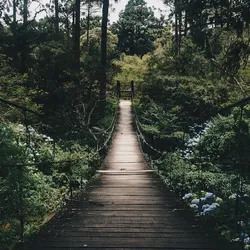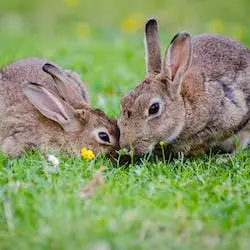
Level 1:
Our planet is cool and wonderful. It has many living things. We must take care of it. We can do this by being sustainable. That means using things wisely and not wasting them. Buying organic food helps the Earth too. We can make soil from food scraps through composting. It helps plants grow. Eco-friendly things are good for the environment. Earth has many different plants and animals. It’s called biodiversity. We must protect them from going away forever. When trees are cut down, it’s called deforestation. It’s not good for the planet. Pollution is dirty stuff in the air, water, or ground. It makes Earth sick. We need to stop it. Fishing too much harms the sea animals. They can disappear forever, which is extinction. Everything in nature is connected. We must be kind to nature. Harmful stuff from factories is called pollutants. We need to find cleaner energy like sunlight and wind. All people should have access to clean water. Cities are growing, but we need to save green spaces. Nature makes us feel good and happy. Taking care of Earth means taking care of ourselves. Let’s be responsible for our planet and make it better!
Level 2:
Our wonderful planet is amazing and full of life. It’s crucial that we care for it. We can do this by being sustainable, which means using resources wisely and avoiding waste. Choosing organic food and composting our scraps helps too. Eco-friendly choices are good for the environment. Earth is home to a variety of plants and animals called biodiversity. We must protect them from disappearing forever, which is called extinction. Cutting down trees harms our planet, known as deforestation. Pollution, the dirty stuff in the air, water, or ground, makes Earth sick. We must stop it. Overfishing harms sea animals, leading to their disappearance. Nature is interconnected, and we must be kind to it. Harmful factory stuff is called pollutants. We need cleaner energy like sunlight and wind. Everyone deserves access to clean water. While cities grow, we must save green spaces. Nature makes us happy and healthy. By caring for Earth, we care for ourselves. Let’s all take responsibility and make our planet better!
Full Story:
The world we inhabit, with its vast ecosystems and incredible diversity, is something to marvel at. Our environment sustains life as we know it in all its natural splendor. It provides us with essential resources, breathtaking landscapes, and a habitat for countless species. But how often do we stop and think about our impact on this delicate balance as we go about our daily lives? Are we nurturing sustainability and vitality, or are we inadvertently causing harm?
Let’s delve into the heart of the matter: the environment’s significance and the steps we can take to protect it. Our planet’s health depends on us, and it’s time we embrace our responsibility with an open mind and a sense of urgency.
First and foremost, sustainability is the cornerstone of a thriving environment. It means living in harmony with nature, making choices that meet our needs without compromising future generations’ ability to meet theirs. Our actions can either contribute to sustainability or detract from the food we eat to the products we use.
Consider the food we consume daily. How much of it comes from local, organic sources? By supporting local farmers and choosing organic produce, we reduce the environmental footprint of our meals. Additionally, we can minimize food waste by planning our purchases thoughtfully and composting organic scraps. This simple change can profoundly impact reducing methane emissions from landfills, a significant greenhouse gas.
Our consumption patterns also extend to the products we buy. Opting for items made from sustainable materials and produced using eco-friendly practices can help conserve natural resources and reduce pollution. Before purchasing, we can ask ourselves, “Is this product really necessary? Can I find a more sustainable alternative?”
Now, let’s talk about biodiversity—the abundance of life in various forms on Earth. Biodiversity is what gives our planet its richness and resilience. Think about the many unique species of plants, animals, and microorganisms that call our world home. Each plays a vital role in maintaining the delicate balance of ecosystems.
Unfortunately, human activities such as deforestation, pollution, and overfishing have led to a staggering biodiversity loss. The extinction of even one species can have far-reaching consequences, disrupting entire ecosystems. This raises important questions: Are we doing enough to protect endangered species and their habitats? Can we find innovative solutions to mitigate the negative impacts of human activities on biodiversity?
When we consider our environment, we must also recognize the interconnectedness of all living beings. The well-being of humans is intrinsically tied to the health of our surroundings. Air, water, and soil—all essential for life—are part of this intricate web of connections.
Air pollution, for instance, is a pressing issue that affects us all. The burning of fossil fuels and industrial emissions release harmful pollutants into the air we breathe. This severely affects human health, particularly vulnerable populations such as children, older people, and those with respiratory conditions. How can we prioritize clean air and reduce our dependence on fossil fuels? What role can renewable energy sources play in securing a cleaner and healthier future?
Water, too, is a precious resource that requires our utmost attention. Access to clean and safe water is a fundamental human right. Yet, millions around the world still lack this necessity. Contaminated water sources not only endanger human health but also jeopardize aquatic life. Are we doing enough to protect our water sources and ensure equitable access for all? Can we adopt water-saving practices daily to alleviate the strain on this finite resource?
Furthermore, the health of our environment is intimately tied to our mental and physical well-being. Spending time in nature has been shown to reduce stress, improve mood, and enhance cognitive function. Yet, as urbanization spreads, people are becoming increasingly disconnected from nature. How can we balance urban development and preserving green spaces for the well-being of current and future generations?
The path to a sustainable and vital environment is not without its challenges. Still, it is a journey worth embarking upon. We can leave a lasting impact on our planet’s health by reevaluating our choices, supporting sustainable practices, and advocating for positive change.
The environment is calm indeed—it is our life support system, our sanctuary, and our inspiration. Embracing sustainability, protecting biodiversity, and recognizing our interconnectedness are lofty ideals and essential actions for a better future. Let’s be honest with ourselves and take responsibility for our choices. Together, we can foster a thriving environment that sustains life for generations. The power is in our hands; the time to act is now.
Questions:
Question: What does sustainability mean, and how can we achieve it?
Answer: Sustainability means using resources wisely and protecting the environment for the future. We can achieve it by making eco-friendly choices, composting organic waste, and supporting local and organic products.
Question: Why is biodiversity essential for our planet?
Answer: Biodiversity is crucial because it provides richness and resilience to Earth’s ecosystems. It helps maintain the delicate balance and supports the well-being of various living organisms, including humans.
Question: How does deforestation impact the environment?
Answer: Deforestation harms the environment by reducing the number of trees, leading to soil erosion, loss of wildlife habitats, and increased greenhouse gas emissions.
Question: What are pollutants, and why are they harmful to our planet?
Answer: Pollutants are harmful substances released into the air, water, or soil. They cause pollution, which can harm human health, damage ecosystems, and contribute to climate change.
Question: How important is it for individuals to take responsibility for the environment’s well-being?
Answer: It is highly important for individuals to take responsibility for the environment’s well-being. By making conscious choices and adopting sustainable practices, we can collectively make a significant positive impact on our planet’s health and future.
Fill in the Blanks:
sustainability, urbanization, Overfishing, organic, Biodiversity, pollutants, pollution, Sustainability, deforestation, equitable, extinction, overfishing, biodiversity, interconnectedness, composting, Pollution
Title: The Power of a Thriving Environment: Nurturing ________ and Vitality
The world we inhabit, with its vast ecosystems and incredible diversity, is truly something to marvel at.
Are we nurturing ________ and vitality, or are we inadvertently causing harm?
How much of it comes from local, ________ sources?
Additionally, we can minimize food waste by planning our purchases thoughtfully and ________ organic scraps.
Opting for items made from sustainable materials and produced using eco-friendly practices can help conserve natural resources and reduce ________.
Can I find a more sustainable alternative?”
Now, let’s talk about ________—the abundance of life in various forms on Earth.
________ is what gives our planet its richness and resilience.
Unfortunately, human activities such as ________, pollution, and ________ have led to a staggering loss of biodiversity.
The ________ of even one species can have far-reaching consequences, disrupting entire ecosystems.
When we consider our environment, we must also recognize the ________ of all living beings.
The burning of fossil fuels and industrial emissions release harmful ________ into the air we breathe.
Are we doing enough to protect our water sources and ensure ________ access for all?
Yet, as ________ spreads, people are becoming increasingly disconnected from nature.
________ is dirty stuff in the air, water, or ground.
________ harms sea animals, leading to their disappearance.
Vocabulary:
Sustainability: The ability to use resources wisely and protect the environment for future generations.
Organic: Relating to products grown or made without the use of synthetic chemicals or pesticides.
Composting: The process of turning organic waste, like food scraps, into nutrient-rich soil.
Eco-friendly: Environmentally friendly; not harmful to the environment.
Biodiversity: The variety of living organisms in an ecosystem.
Extinction: The complete disappearance of a species from the Earth.
Ecosystem: A community of living organisms and their environment interacting as a system.
Deforestation: The clearing or cutting down of forests on a large scale.
Pollution: The introduction of harmful substances into the environment, affecting air, water, or soil.
Overfishing: Harvesting fish from the ocean faster than they can reproduce, leading to population declines.
Interconnectedness: The idea that all living things are connected and influence each other.
Pollutants: Harmful substances that cause pollution in the air, water, or soil.
Fossil fuels: Non-renewable energy sources, like coal, oil, and natural gas, formed from ancient plants and animals.
Renewable energy sources: Energy sources that can be replenished naturally, like solar and wind power.
Equitable: Fair and just; providing equal access to resources or opportunities.
Urbanization: The process of the population moving from rural to urban areas, leading to city growth.
Well-being: The state of being happy, healthy, and comfortable.




